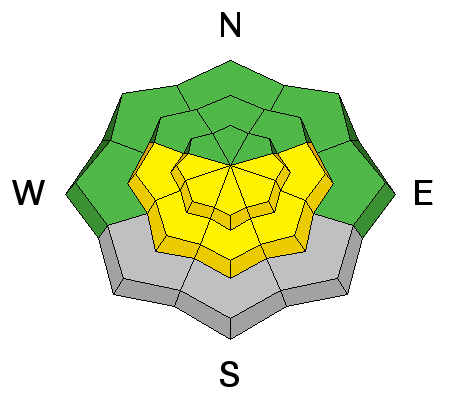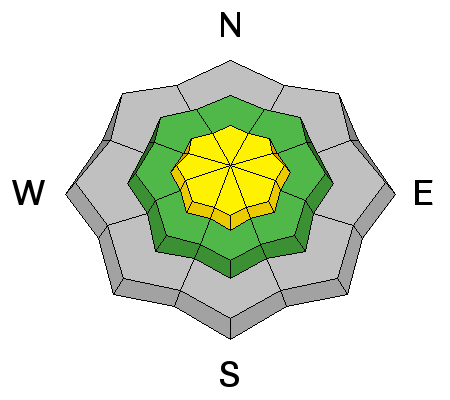| During the month of April, Mark Miller will donate $75 to the charity of your choice (5 to chose from, including the Utah Avalanche Center!) Mark Miller Subaru has raised over $300k in the previous 6 Do Good Feel Good events. More Info here |  |

For every car Mark MIller Subaru sells in April, they will donate $75 to the charity of your choice (5 to choose from). Who are you going to choose? Plus - you can vote for your favorite and the 3 groups receiving the most votes get an additional cash prize donated by Mark Miller Subaru. Details here

| During the month of April, Mark Miller will donate $75 to the charity of your choice (5 to chose from, including the Utah Avalanche Center!) Mark Miller Subaru has raised over $300k in the previous 6 Do Good Feel Good events. More Info here |  |
| Advisory: Logan Area Mountains | Issued by Toby Weed for Thursday - January 15, 2015 - 6:11am |
|---|
 |
special announcement Special thanks to Buttar's and ArcticCat for hooking us up with the light and powerful M8000. This machine will make our field days more fun, safe, and productive and will significantly boost our outreach and education efforts.
We picked up and tried out the new sled last week.
|
 |
current conditions The 8400' Tony Grove Snotel reports 58 inches of total snow containing 119% of average water for the date, and its 26 degrees this morning. The central part of the Bear River Range picked up about 5 inches of moderate density snow from Monday's storm, and there's less at lower elevations. We found a bit more fresh snow (about 8 inches), and pretty good smooth, shallow powder riding conditions in Providence Canyon yesterday.
|
 |
recent activity We noticed a couple fresh natural wind slabs and some loose wet activity at upper elevations in the Tony Grove Area yesterday (1-14-15)
A fresh wind slab under the cliffs on the east side of Naomi Peak. (1-14-15) Visit our Backcountry Observations Page for more information.....
|
| type | aspect/elevation | characteristics |
|---|


|


|

LIKELIHOOD
 LIKELY
UNLIKELY
SIZE
 LARGE
SMALL
TREND
 INCREASING DANGER
SAME
DECREASING DANGER
|
|
description
Shallow wet sluffs consisting of saturated fresh snow are likely in steep sunny terrain. Wet slides should be manageable, but even a small avalanche is likely to pick up and involve all the new snow in it's path on a nice smooth and hard bed surface. Sunshine above the cloud-deck will cause the danger of wet avalanches to increase with midday solar warming.
|
| type | aspect/elevation | characteristics |
|---|


|


|

LIKELIHOOD
 LIKELY
UNLIKELY
SIZE
 LARGE
SMALL
TREND
 INCREASING DANGER
SAME
DECREASING DANGER
|
|
description
We noted a good deal of drifting at upper elevations in the Tony Grove Area yesterday and a couple fresh natural avalanches. Triggered wind slab avalanches are possible on drifted upper elevation slopes again today. Wind slabs formed in exposed terrain at high elevations in and around terrain features like gullies, sub-ridges, and cliff bands. Drifts and wind slabs will be fairly obvious, consisting of stiffer snow, rounded, chalky looking, and perhaps hollow sounding. Best to avoid wind deposited snow on slopes steeper than about 30 degrees.
|
 |
weather It'll be mostly cloudy again today down low, but sunshine above the clouds again is a good bet, with a high temperature at 8500' around 36 degrees.. Overnight low temperatures are expected to be around 24 degrees. It'll be mostly cloudy tomorrow with increasing west wind, high temperatures around 36 degrees, and a chance for snowfall, but accumulations look light at best. Check out our one-stop weather page........HERE
|
| general announcements You can now receive advisories by email for each region in the state including Logan. Go here for details. Get your advisory on your iPhone along with great navigation and rescue tools....... Utah Avalanche Center mobile app Please submit snow and avalanche observations from your ventures in the backcountry HERE. You can call us at 801-524-5304 or email HERE, or include #utavy in your Instagram or Tweet us @UAClogan. To report avalanche activity in the Logan Area or to contact the local avalanche forecaster call me, Toby, at 435-757-7578. I'll regularly update this advisory on Monday, Wednesday, Friday, and Saturday mornings by about 7:30. This advisory is produced by the U.S.D.A. Forest Service, which is solely responsible for its content. It describes only general avalanche conditions and local variations always exist. |
Advisory Hotline: (888) 999-4019 | Contact Information